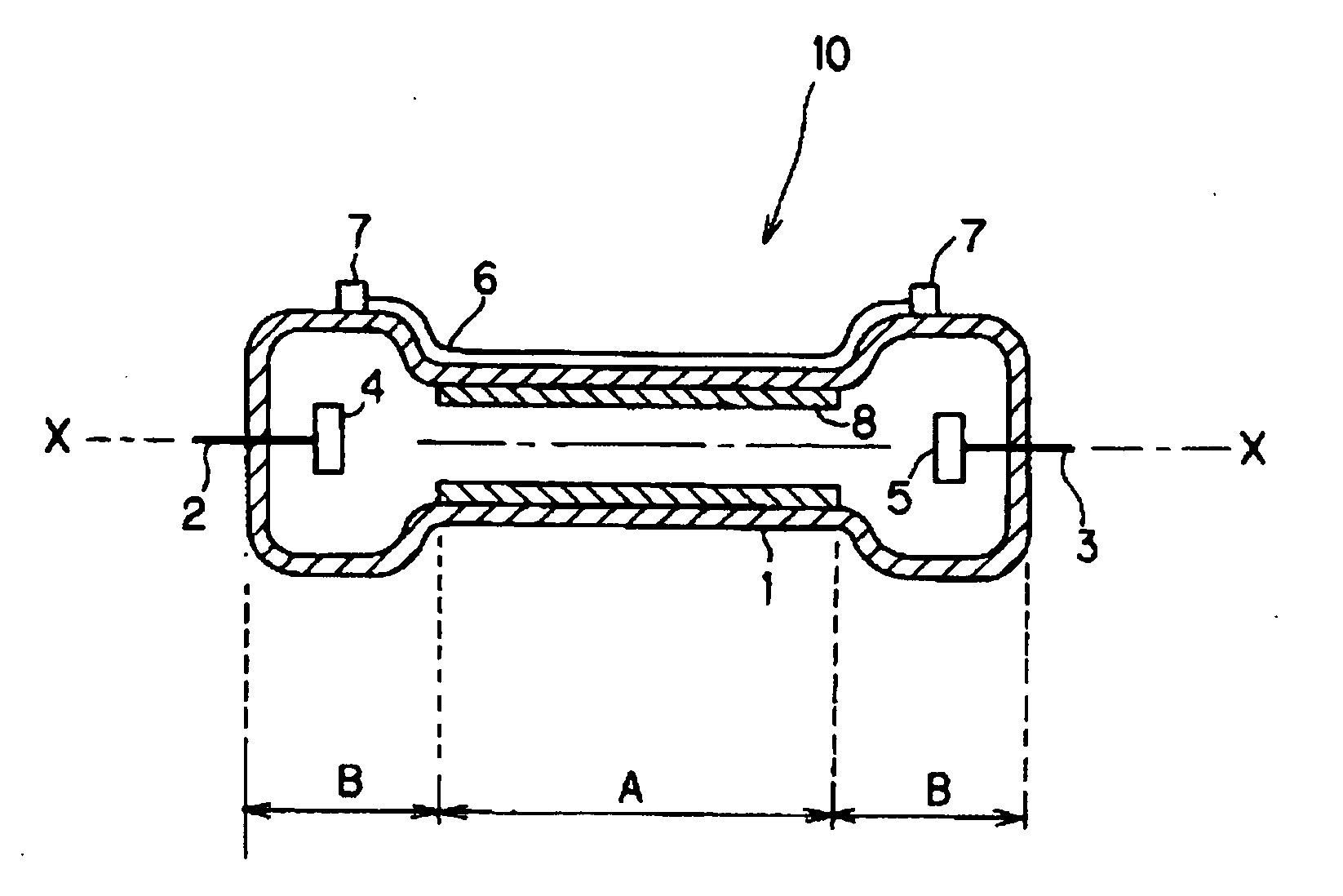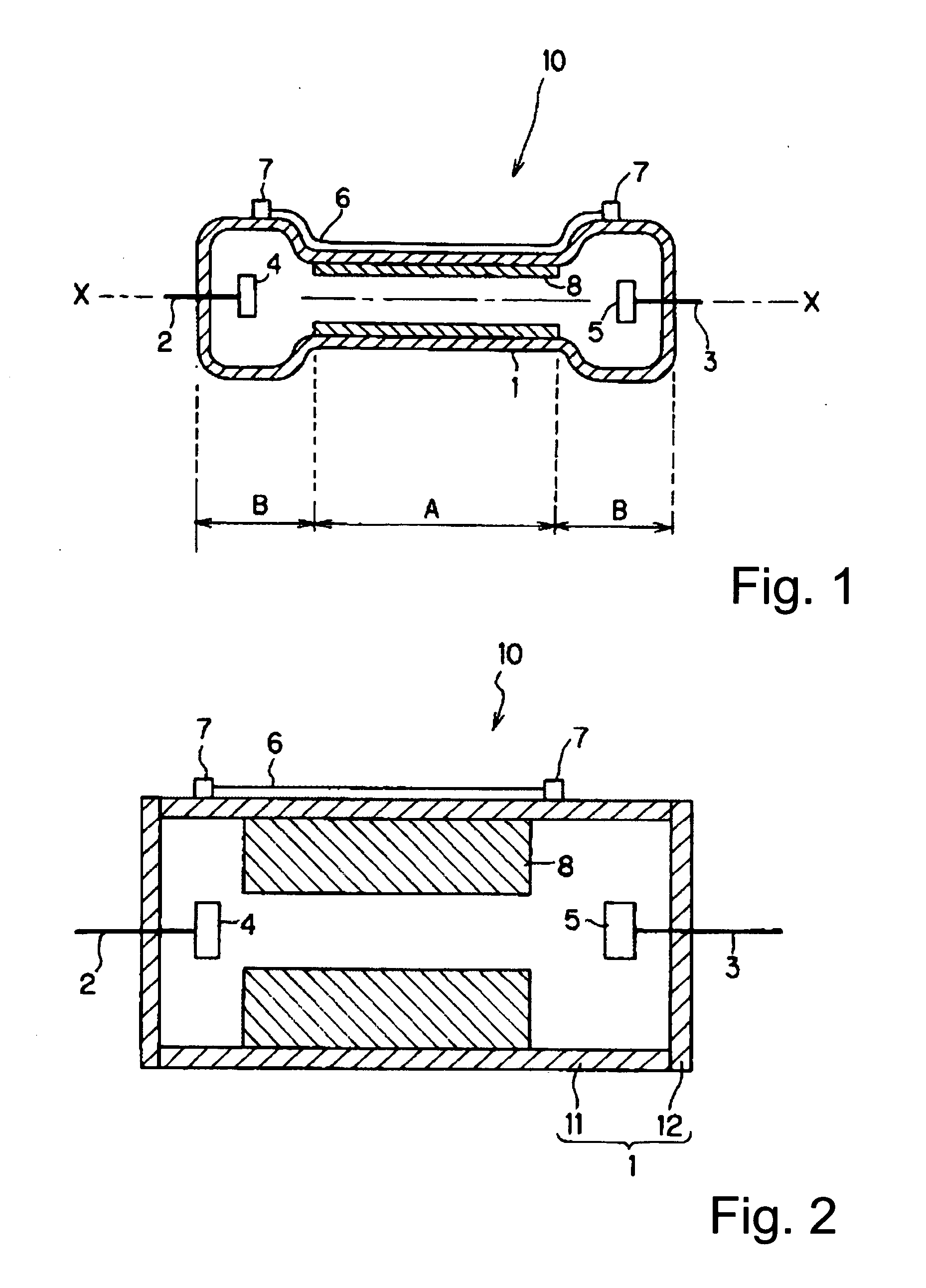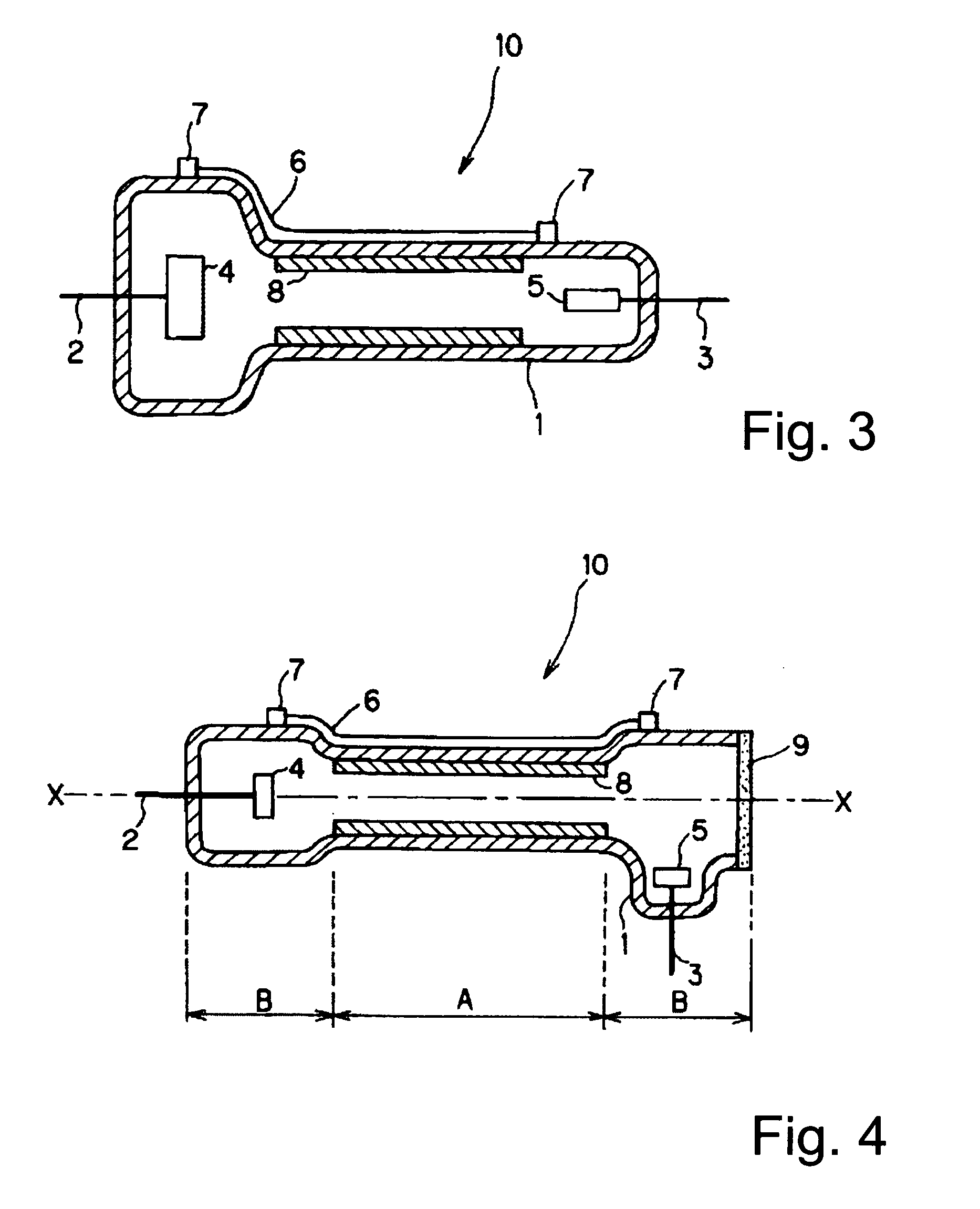Flash lamp with high irradiance
a flash lamp and high irradiance technology, applied in the field of flash lamps, can solve the problems of high temperature state, excessive wall load of discharge vessels, premature deterioration of electrodes, etc., and achieve the effect of long service life and high radiation intensity
- Summary
- Abstract
- Description
- Claims
- Application Information
AI Technical Summary
Benefits of technology
Problems solved by technology
Method used
Image
Examples
embodiment 1
[0066] It is advantageous to reduce the inside diameter of the area of the discharge vessel in which the discharge takes place in order to increase the current density. FIG. 1 shows one example of a specific arrangement of this lamp.
[0067] A flash lamp 10 has a discharge vessel 1 which is present between the electrodes 4, 5 and which comprises a part A with a reduced inside diameter. The two ends B of the discharge vessel 1 are areas which are provided with electrodes and have a relatively great inside diameter. Consequently, the entire discharge vessel 1, in this example, is formed essentially in the form of a hand weight. Since, generally, a round tube is used for the discharge vessel 1, the middle of the part A with the small diameter, of the tube and of the two ends B on the tube axis X-X, and their cross sections are round. The cross-sectional shape, however, is not always limited to a circular shape. From the two ends of the discharge vessel 1, there extend electrode rods 2, ...
embodiment 2
[0069] In order to be able to place the part with a small diameter in the discharge vessel, the arrangement shown in FIG. 2 can also be undertaken. Here, another tubular component 8 is slipped onto the inside of the tube 11 of the discharge vessel and attached; its outside diameter is equal to the inside diameter of the tube. On the two ends of the tube 11, there is a cover 12 so that, overall, a cylindrical discharge vessel 1 is formed. In this case, the tube 8 must have a certain thickness on the inside in order to constrict the discharge part. The arrangement of the electrodes 4, 5 is identical to FIG. 1.
embodiment 3
[0070] In the above described two examples, the electrode size of the anode 5 is essentially identical to the size of the cathode 4. However, this need not always be the case. It is disadvantageous for the cathode in which sputtering often takes place as a result of ion collision to be made small. However, the anode for which this disadvantage is minor can be made as a relatively small electrode. Therefore, as shown in FIG. 3, the diameter of the cathode 4 and the inside diameter of the discharge vessel 1 which surrounds the cathode 4, and thus, the cathode 4, can be made larger and also an arrangement of the discharge vessel 1 can be undertaken in which not only the inside diameter of the middle of the discharge vessel, but also the inside diameter of the discharge vessel area surrounding the anode 5, can be reduced.
[0071] In the embodiments 1 to 3 of FIGS. 1 to 3, there is a trigger electrode 6 running along the outside of the discharge vessel 1. A stop 7 for the trigger electrod...
PUM
 Login to View More
Login to View More Abstract
Description
Claims
Application Information
 Login to View More
Login to View More - R&D
- Intellectual Property
- Life Sciences
- Materials
- Tech Scout
- Unparalleled Data Quality
- Higher Quality Content
- 60% Fewer Hallucinations
Browse by: Latest US Patents, China's latest patents, Technical Efficacy Thesaurus, Application Domain, Technology Topic, Popular Technical Reports.
© 2025 PatSnap. All rights reserved.Legal|Privacy policy|Modern Slavery Act Transparency Statement|Sitemap|About US| Contact US: help@patsnap.com



